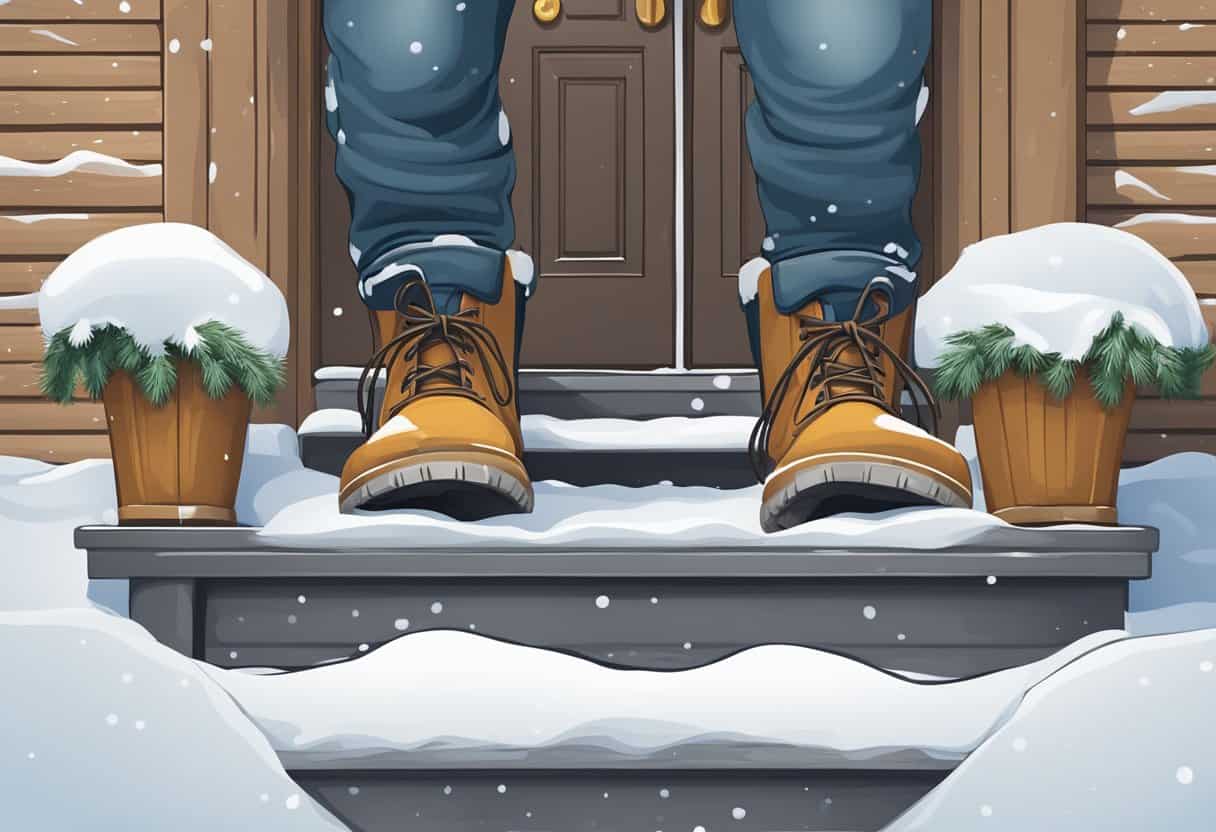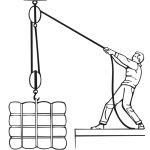When winter’s snowfall makes paths and driveways nearly impassable, we often turn to our trusty shovels, but our feet need equal attention. Selecting the proper shovelling boots outfitted with adequate traction is not just a matter of comfort but a crucial step in ensuring safety when shovelling snow.
Table of Contents
Essential Features Of Shovelling Boots
The design and features of winter boots have evolved, embracing ergonomic considerations and advancements in materials and tread patterns to maximize safety. Form-fitting, water-resistant, and insulated options are now standard. Still, the real game changer is in the soles. Quality boots for shovelling come with soles designed to bite into ice and snow, keeping us upright and in control.
When selecting boots for shovelling snow, we prioritize traction as a critical feature. Here are the key features to look for in boots designed for shovelling with optimal traction:
Grippy Outsoles: The outsole should feature deep lugs, ideally made of non-slip rubber, providing superior grip on snow and ice. The shovelling boot’s lugs bite into snow and ice, providing the grip we need to stay upright. Look for soles with a patterned tread explicitly designed for icy conditions. The patterns on the soles of shovelling boots play a critical role in providing grip on slippery surfaces. We’ve seen the introduction of multi-directional treads that offer stability in all directions, a feature especially useful when navigating uneven terrain. Hexagonal or octagonal-shaped lugs have been widely adopted for their ability to bite into ice and packed snow effectively.
Waterproof Construction: A waterproof upper is essential to keep feet dry, so materials like leather or synthetic waterproof membranes prevent water and snow from seeping in. Look for shovelling boots with waterproof membranes like Gore-Tex® or rubber shells that prevent snowmelt from soaking through. Materials should also be flexible enough to allow natural foot movement while shovelling. Additionally, seams on your shovelling boots must be sealed or treated to enhance waterproofing. To know if the shovelling boot is durable, look for solid stitching and a well-attached, thick sole.
Insulation: To retain heat and provide comfort in cold conditions, insulation is a must to maintain warmth during cold weather tasks. Thinsulate or wool can keep our feet warm in sub-zero temperatures. Insulation is often rated by grams – the higher the number, the warmer the boot.
Supportive Fit: The proper boot size is crucial for comfort and foot support. Shovelling boots should allow for thick socks without causing tightness. A good fit means a thumb’s width of space in the front of the boot to prevent our toes from hitting the front when we walk downhill. Shovelling boots need a supportive ankle design to reduce the risk of ankle rolling, which can lead to sprains or worse. Cushioned footbeds and ankle support structures are engineered to minimize fatigue, while lightweight insulation ensures warmth without the added bulk. These ergonomic features help maintain a natural stride, even in challenging conditions.
Closure System: We recommend shovelling boots with easy-to-use closures, like lace-up designs or Velcro straps, that can be adjusted even with gloves on. This ensures a snug fit and helps keep snow out of our boots.
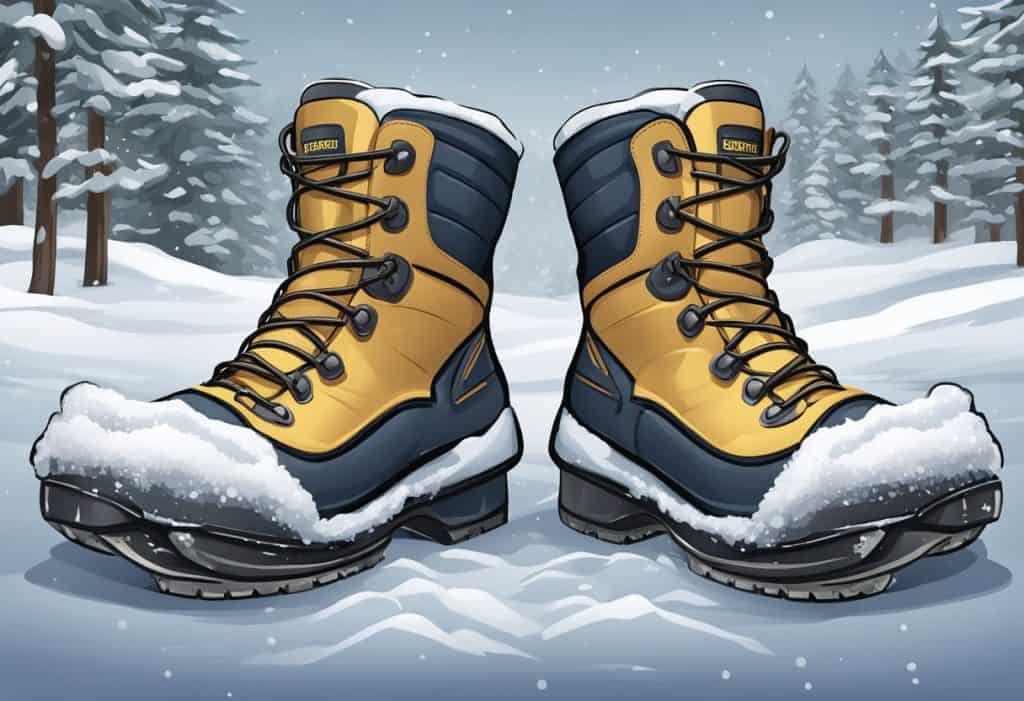
Cleaning Techniques And Care Of Shovelling Boots
Proper maintenance and care ensure that our shovelling boots remain durable and effective in combating slippery conditions.
Dirt and Mud Removal: Tap your shovelling boots together to remove snow and mud from your boots and any excess dirt. Use a damp cloth using lukewarm water to loosen and remove any remaining mud.
Salt Stains: If your shovelling boots have salt stains, mix equal parts water and vinegar. Dip a microfiber or soft cloth in the mixture and gently rub the stained areas to remove the salt stains.
Drying: To dry your boots, avoid using direct heat as it can damage them. Instead, air dry your shovelling boots at room temperature.
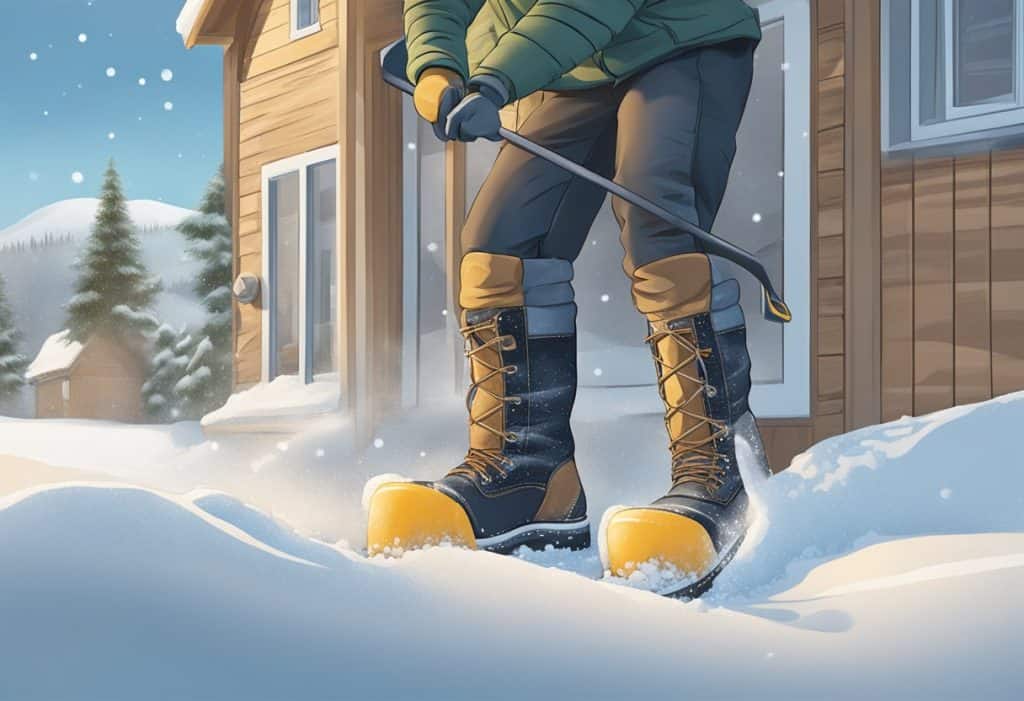
Longevity Tips
Regular Inspection: Check the soles and seams of your shovelling boots every month for any signs of wear and tear. If you notice any minor damage, address it promptly to prevent it from worsening.
Conditioning: If applicable, apply a leather conditioner after cleaning your shovelling boots. This will help preserve the leather and keep it in good condition.
Adequate Rotation: If you spend a great deal of time shovelling, it is a good idea to use multiple pairs of shovelling boots to allow them to dry out adequately between uses and avoid excessive wear on any one pair. This will help extend the life of your shovelling boots and keep them looking their best.
Boot Storage: Proper ventilation is essential to prevent moisture buildup and odour. Make sure to store your boots in a well ventilated area. To maintain the shape of your boots, you can use a boot shaper or stuff them with newspaper. Keeping your boots in a cool, dark place can protect them from heat and light damage. So, always try to store your boots in a cool, dark place.
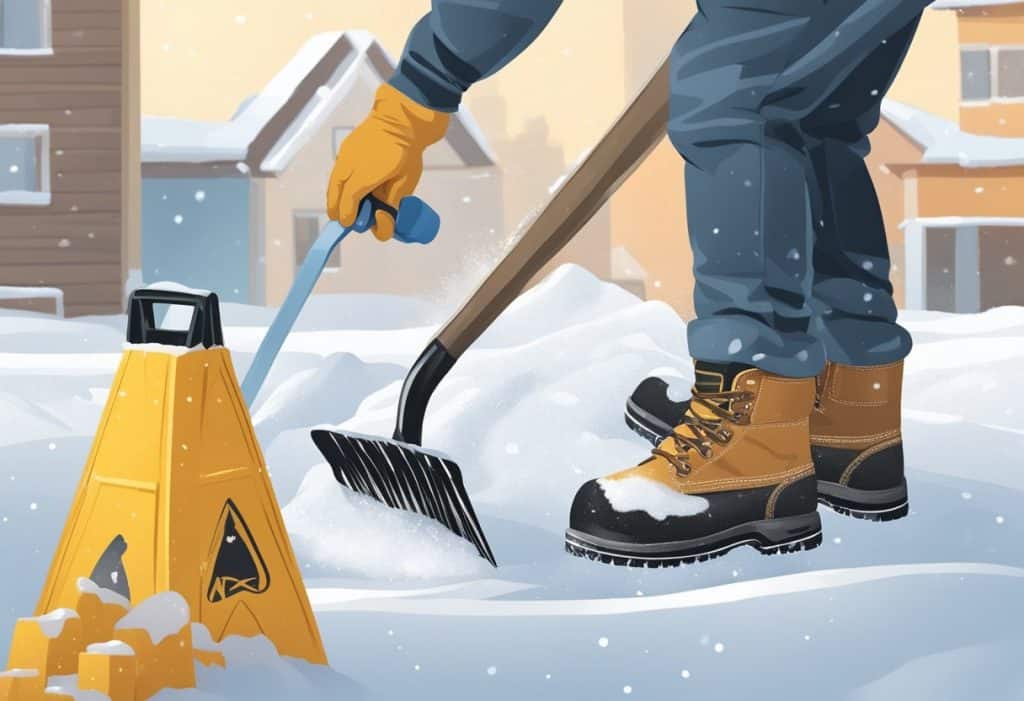
Price Range and Value Proposition
When purchasing shovelling boots with traction, prices vary widely based on brand, material, and additional features. Generally, the price range can be categorized into three tiers:
- Economy: $30-$60
- Mid-range: $60-$120
- Premium: $120-$200+
Boots at the economy level offer basic functionality and adequate traction for light to moderate shovelling conditions. Moving to the mid-range, we encounter materials that provide better insulation and improved durability. Premium boots incorporate advanced traction technologies, superior waterproofing, and ergonomic designs for prolonged comfort.
Our investigations reveal that mid-range boots often provide the best value proposition, balancing cost with features that meet the needs of regular winter maintenance tasks.
We encourage our readers to consider the frequency of use and the snow conditions they face when selecting a pair. If you face harsh winter conditions or have a larger area to maintain, investing in a higher tier is more cost effective due to increased durability and comfort.
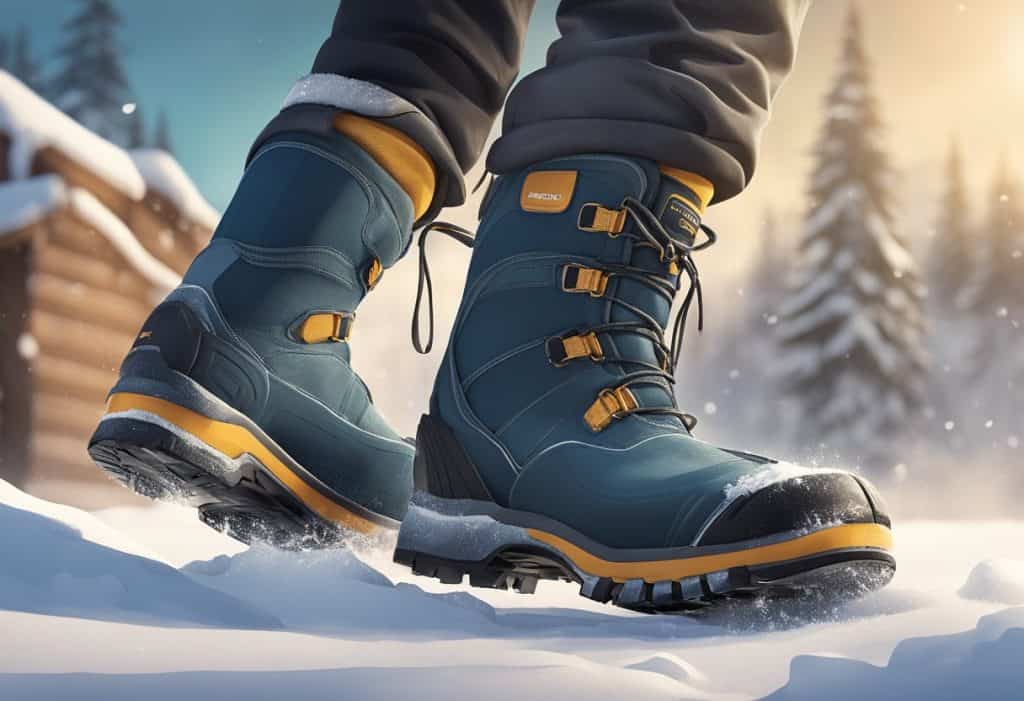
Popular Brands and Models
Several brands stand out when discussing shovelling boots with traction due to their quality and customer satisfaction. In our selection process, we prioritize robust traction, durable materials, and ample insulation to cope with harsh winter conditions. The models listed here are highly regarded in the market and known for their functionality and reliability for shovelling snow for men or women.
Columbia Bugaboot Plus III or IV:
- Traction: Superior grip with Omni-Grip non-marking traction rubber.
- Insulation: Rated down to -25F/-32C, providing excellent warmth.
- Durability: Made from leather, nylon, webbing, and metal hardware.
- Traction: TNF Winter Grip rubber outsole with temperature-sensitive IcePick lugs.
- Insulation: 200g of Heatseeker insulation for warmth in low temperatures.
- Construction: Waterproof leather and a moulded footbed for comfort.
- Traction: Handcrafted waterproof vulcanized rubber shell with Sorel Aero-Trac non-loading outsole.
- Insulation: 9mm washable recycled felt inner boot with Sherpa pile snow cuff.
- Material: Waterproof nubuck leather upper.
Muck Boot Arctic Ice Extreme Conditions:
- Traction: Vibram Arctic Grip outsole for wet ice traction and Vibram Icetrek for dry ice.
- Insulation: 8mm neoprene for warmth and comfort, rated for -60F.
- Design: Soft fleece lining and a full-length midsole for additional support.
Final Thoughts
Selecting the proper shovelling boots with traction ensures safety and comfort during winter snow removal. Key features include grippy outsoles, waterproof construction, insulation, supportive fit, and a practical closure system.
Frequently Asked Questions
Are there boots available that have built-in ice cleats for improved stability?
Some boots come with built in ice cleats or grippers that flip out to provide additional traction on ice. These boots offer a convenient, integrated solution for improved stability in icy conditions.
Which women’s winter boots are best for extreme cold while providing good traction?
For women, the boots in this article are great or you may prefer the Muck boot, my personal favorite, or Sorel Joan of Arctic and the UGG Adirondack III, which are excellent for extreme cold and provide good traction. These boots balance warmth and a design focused on preventing slips.
Can I modify my current work boots to improve traction for winter conditions?
Work boots can be modified for winter conditions using traction cleats or ice grips attached to the soles. Options like Yaktrax or STABILicers can be easily added to enhance ice and snow grip.

